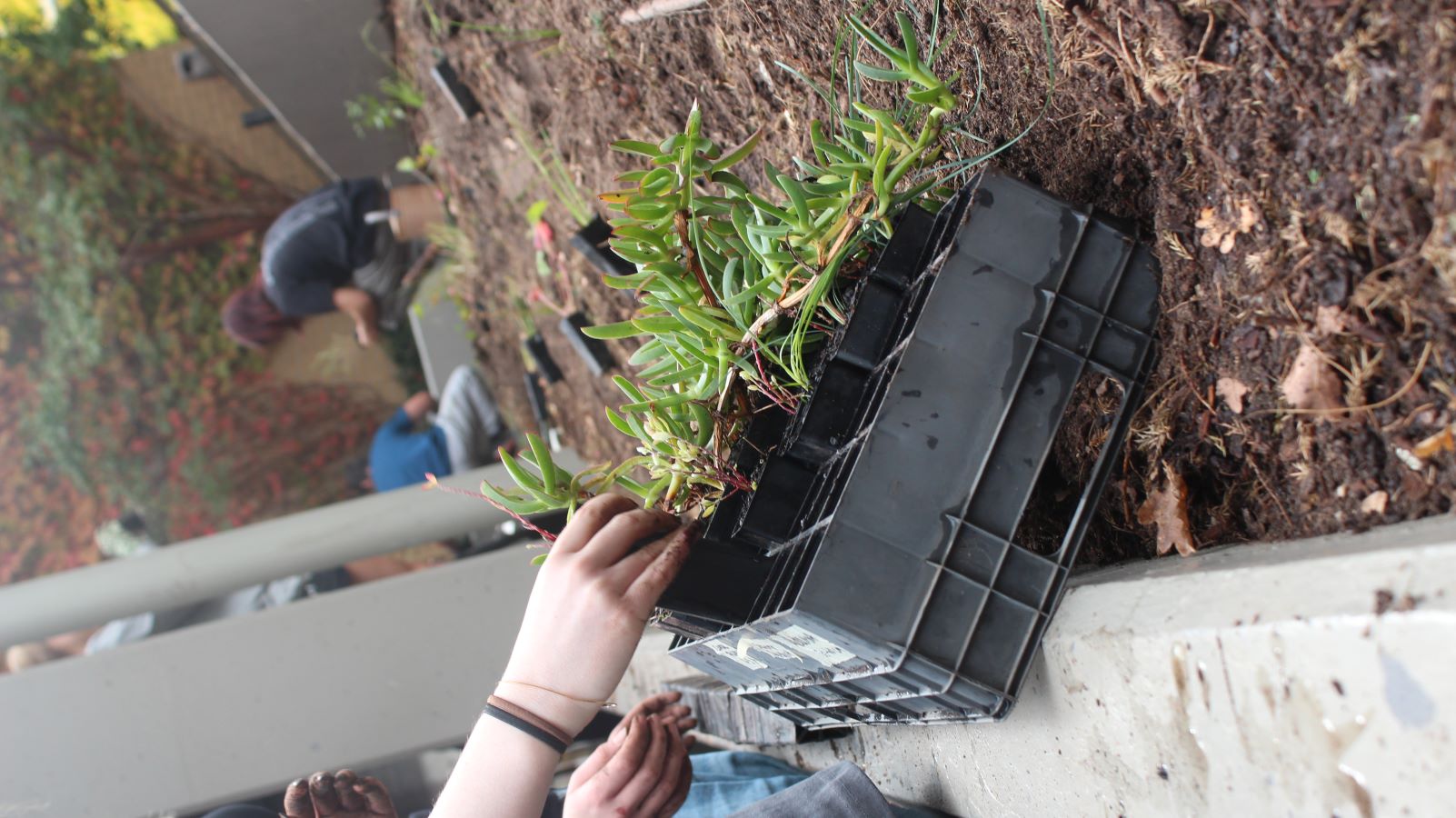Native Garden

The plants were specifically chosen for this site for their ability to restore local biodiversity and provide habitat for birdlife, insects and butterflies in an urban environment.
This student-led project was established in 2024. The Wesmob student group fundraised for and planted the garden, in collaboration with the Boonwurrung Land and Sea Council and with the assistance of urban ecologist and conservation and rewilding advocate, Gio Fitzpatrick (OW2014).
It honours the native flora that once thrived on this site and recognises the enduring custodianship of the Boonwurrung people of the Kulian nation. This garden reminds us that reconciliation involves both understanding and care for Country: Always was, always will be Aboriginal land.
The garden is located opposite the swimming pool at the St Kilda Road Campus.
Plants featured in the garden:
Names are provided in Woiwurrung and Gunditjmara first, where possible, followed by their common and/or botanical name in English.
- Common Everlasting (Chrysocephalum apiculatum): Yellow flowers and attracts the Australian Painted Lady butterfly by providing habitat and food for both its caterpillars and adult butterflies.
- Nodding Saltbush (Einadia nutans): Provides food for caterpillars and birds and produces edible berries.
- Murnong (Woi-wurrung), The Yam Daisy: A butterfly-attracting plant and a tuber staple of the Kulin diet, which was nearly eradicated from Melbourne after colonisation.
- Pike (Woi-wurrung), Bulbine Lily (Bulbine bulbosa): Can be roasted and eaten; they are sweet tasting and contain calcium and iron.
- Karawun (Woi-wurrung) (Lomandra longifolia): Used for weaving baskets, mats, and various food preparation tasks.
- Weeping Grass (Microlaena stipoides): A native ground cover that spreads low across the ground, helping to protect the soil and support biodiversity. It attracts the ringed Xenica butterfly and provides food for its caterpillars.
- Hop Goodenia (Goodenia ovata): Supports local biodiversity by providing important habitat for insects and butterflies.
- Austral Stork’s Bill (Pelargonium australe): The roots are used by the Kulin people for food and medicine.
- Mookitch (Gunditjmara) Large Kangaroo Apple (Solanum laciniatum): Attracts the Common Blackbird, which feeds on its berries and nearby insects.
